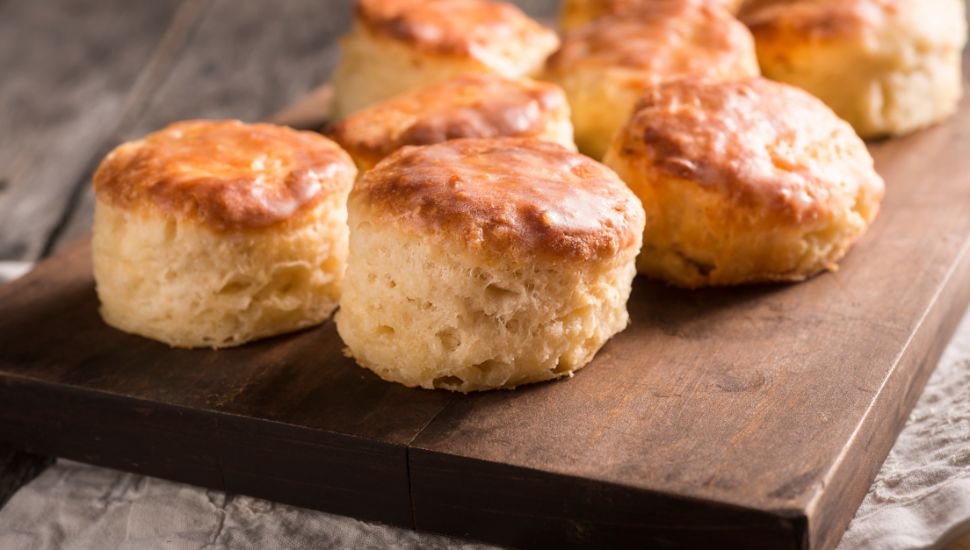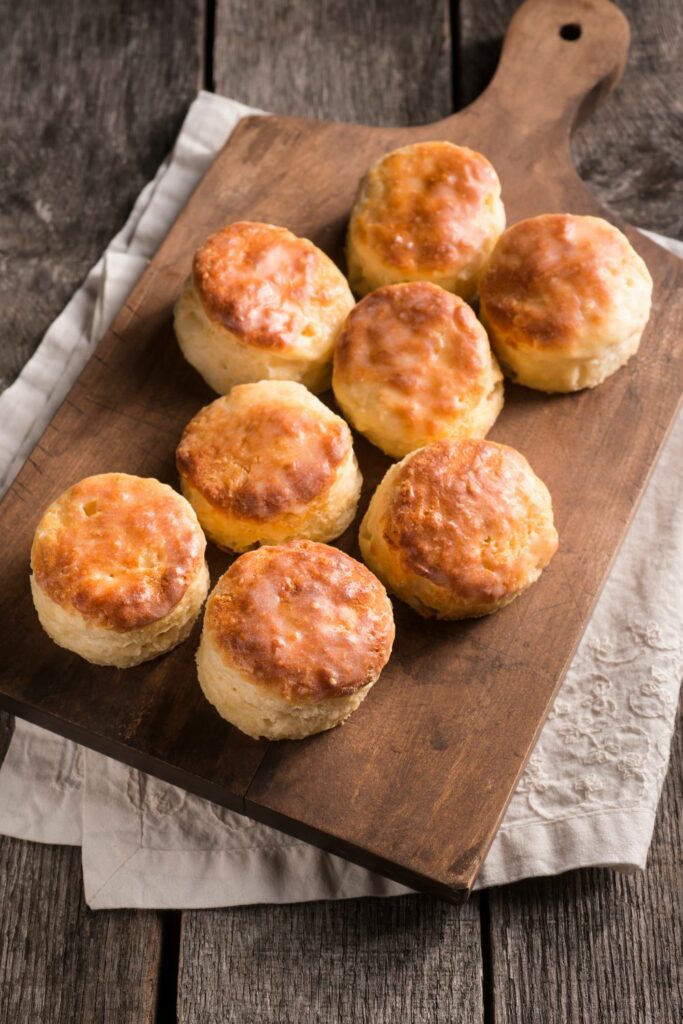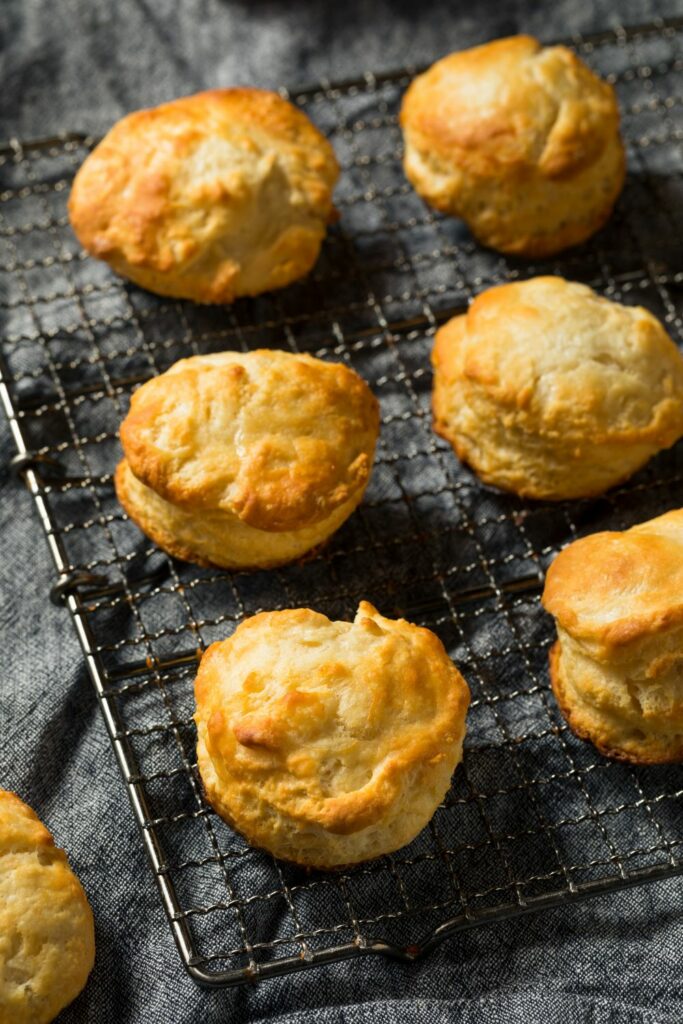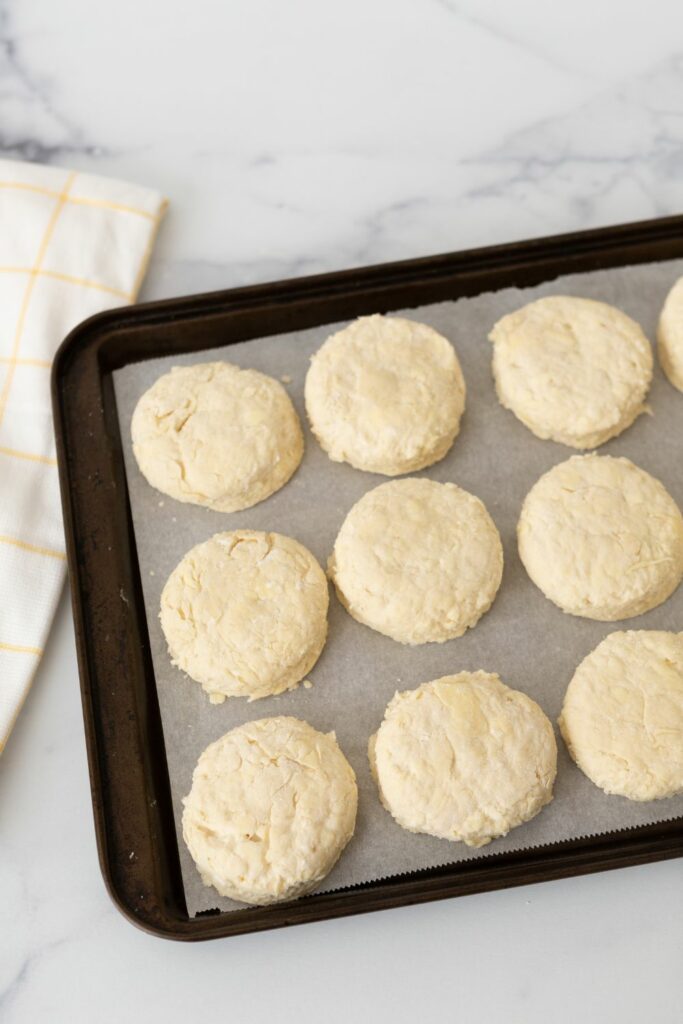
There’s nothing quite like a warm, flaky buttermilk biscuit fresh from the oven.
With their golden, crispy exteriors and soft, fluffy interiors, these classic Southern staples are the perfect addition to any meal, whether you’re serving them alongside hearty sausage gravy for breakfast or as a side to a comforting dinner.
The best part? With just a few simple ingredients and some easy techniques, you can make delicious homemade buttermilk biscuits right in your own kitchen.
Step-By-Step Buttermilk Biscuit Recipe
Ingredients:
To make the best buttermilk biscuits, you’ll need:
- 2 cups all-purpose flour
- 1 tablespoon baking powder
- 1 teaspoon salt
- 6 tablespoons cold unsalted butter, cubed
- 3/4 cup cold buttermilk
The key to achieving those coveted flaky layers is using cold ingredients, particularly the butter and buttermilk
Cold butter will steam and create pockets of air as it melts in the hot oven, resulting in a loftier, flakier biscuit

Step-by-Step Instructions:
- Preheat your oven to 425°F (220°C) and line a baking sheet with parchment paper.
- In a large bowl, whisk together the flour, baking powder, and salt
- Using a pastry cutter or your fingers, cut the cold butter into the flour mixture until it resembles coarse crumbs with some pea-sized pieces remaining
- Create a well in the center of the flour mixture and pour in the cold buttermilk. Use a fork to gently stir until the dough comes together into a shaggy mass. Be careful not to overmix, as this can lead to tough biscuits
- Turn the dough out onto a lightly floured surface and gently pat it into a 1-inch thick rectangle. Fold the dough in half, then pat it out again. Repeat this folding process 3-4 times to create layers.
- Using a 2 1/2-inch round biscuit cutter, cut out biscuits and place them on the prepared baking sheet, spacing them about 1 inch apart. Gently press the scraps together and cut out additional biscuits.
- Brush the tops of the biscuits with a little extra buttermilk
- Bake for 12-15 minutes, until the tops are golden brown
- Remove from the oven and brush with melted butter, if desired. Serve warm.
Tips for the Best Homemade Biscuits
- Use a light hand when mixing and handling the dough to avoid developing too much gluten, which can make your biscuits tough
- Make sure your baking powder is fresh for optimal rise
- Don’t twist the biscuit cutter when cutting out biscuits, as this can seal the edges and prevent them from rising evenly
- For extra-crispy bottoms, bake your biscuits in a cast-iron skillet
- Experiment with mix-ins like shredded cheese, crumbled bacon, or fresh herbs for a flavor boost.

How to Make Buttermilk Biscuits Ahead of Time
To get a head start on your biscuit baking, you can prepare the dough in advance and refrigerate it for up to 2 days before baking
Alternatively, you can cut out the biscuits, place them on a baking sheet, and freeze until solid. Transfer the frozen biscuits to a zip-top bag and store in the freezer for up to 3 months
When ready to bake, simply place the frozen biscuits on a parchment-lined baking sheet and add a few extra minutes to the baking time.
With these easy tips and techniques, you’ll be well on your way to making the best buttermilk biscuits in your own kitchen. Whether you’re a seasoned baker or a novice, these homemade biscuits are sure to impress and delight your family and friends.
So preheat your oven, grab your ingredients, and get ready to enjoy the comforting, irresistible taste of freshly baked buttermilk biscuits.

Common Mistakes to Avoid When Making Buttermilk Biscuits
While making homemade buttermilk biscuits is relatively simple, there are a few common mistakes that can lead to less-than-perfect results.
Here are some pitfalls to avoid:
- Using warm ingredients: As mentioned earlier, cold ingredients are crucial for flaky biscuits. Make sure your butter and buttermilk are chilled before beginning.
- Overworking the dough: Mixing the dough too much can result in tough, dense biscuits. Mix just until the dough comes together and avoid kneading it like bread dough.
- Twisting the biscuit cutter: When cutting out your biscuits, press the cutter straight down and lift it back up without twisting. Twisting the cutter can seal the edges of the biscuits, preventing them from rising properly.
- Placing biscuits too far apart: For taller, softer biscuits, place them close together on the baking sheet so they’re just touching. This helps them rise upwards rather than spreading outwards.
- Using old baking powder or baking soda: Make sure your leavening agents are fresh, as they lose their effectiveness over time. Old baking powder or baking soda can lead to flat, dense biscuits.
- Skipping the folding step: Folding the dough a few times before cutting out the biscuits helps create flaky layers. Don’t skip this step if you want the best texture.
- Overbaking: Keep an eye on your biscuits as they bake, and remove them from the oven when they’re golden brown on top. Overbaking can lead to dry, crumbly biscuits.
- Not measuring ingredients accurately: Baking requires precision, so make sure to measure your ingredients correctly. Use the spoon-and-level method for flour, and level off your measuring spoons and cups.
By avoiding these common mistakes, you’ll be well on your way to creating perfect buttermilk biscuits every time.
Remember, practice makes perfect, so don’t get discouraged if your first batch isn’t flawless. With a little experience and attention to detail, you’ll soon be a biscuit-making pro.









